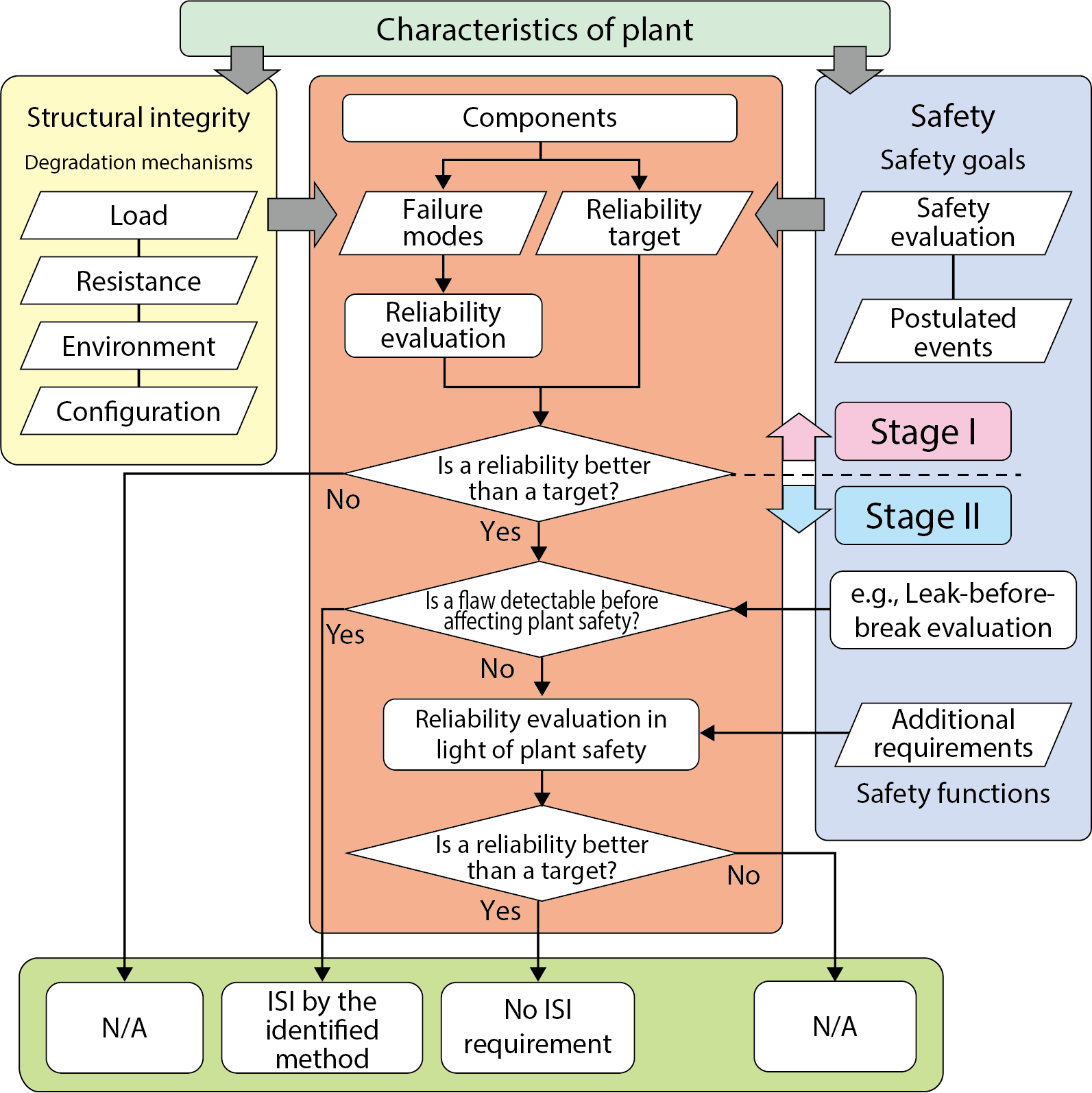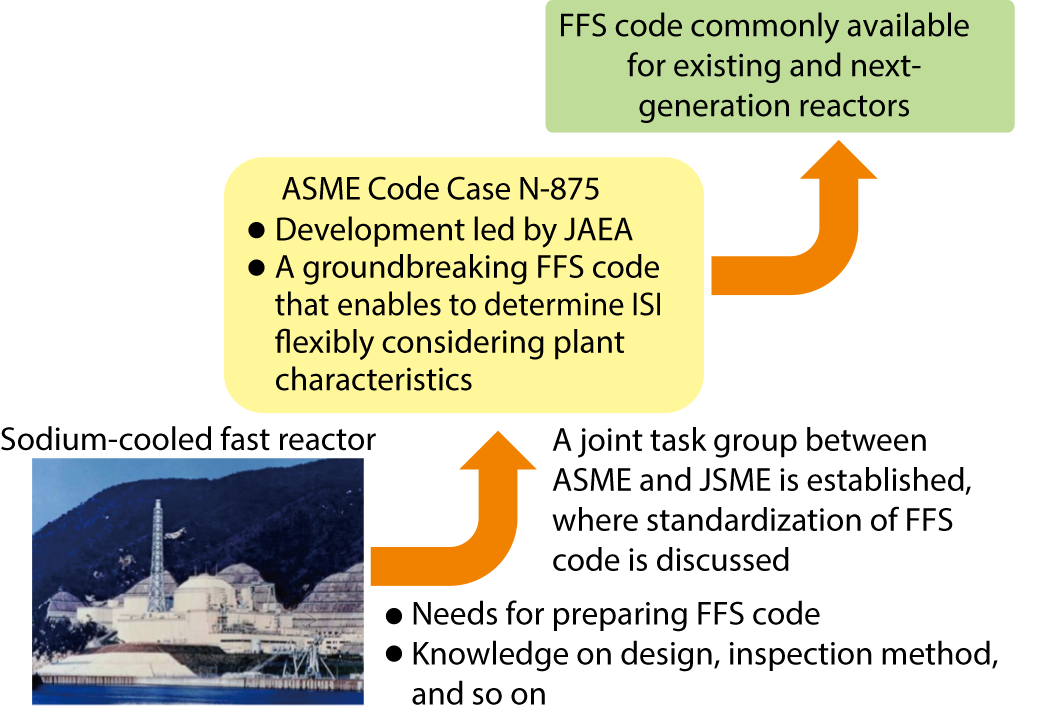
Fig.7-11 Flow for determining ISI

Fig.7-12 International standardization process for the proposed method
In nuclear power plants in Japan, in-service inspection (ISI) is conduced according to the fitness-for-service (FFS) code issued by the Japan Society of Mechanical Engineers (JSME) to maintain the performances of components required for operation. However, the scope of the code is limited to light-water reactors and no FFS code exists for fast reactors in Japan. Taking a look at overseas situations, there is an FFS code for liquid-metal reactors, which is intended for application to sodium-cooled fast reactors in the American Society of Mechanical Engineers (ASME) code, but the code has not been completed. More than 30 years have passed and some important requirements remain undeveloped, and so the code is not practically available. An FFS code is of course important for maintaining performance during operation; even during the plant-design and development stage, it is important for achieving design while taking inspection properties such as accessibility into consideration.
Therefore, we decided to develop a method for determining ISI for fast reactors based on the System Based Code (SBC) concept, which is aimed at rational maintaining the structural integrity of components by setting reliability targets and design and maintenance requirements to meet these targets.
Fig.7-11 shows the proposed flow for determining ISI. The flow consists of two stages. In Stage I, we focus upon the structural integrity of the components. Potential active degradation mechanisms are considered based on conditions including the material and service environment, and then the reliability of the specified component is evaluated. If the reliability meets a target value, it is possible to proceed to Stage II, in which plant safety is the focus. The detectability of defects before they grow to an unacceptable size is assessed in consideration of plant safety. If there is any feasible way to reliably detect degradation, it is adapted as an ISI. Otherwise, structural-integrity evaluation is required while employing a sufficiently conservative hypothesis. If the result meets the target value, ISI is not required. Thus, the proposed flow can determine ISI suitable for fast reactors by taking key characteristics, including the importance of components in light of plant safety, material, environment, and inspection properties, into consideration.
As examples, ISI requirements are investigated for a guard vessel and a core support structure of the fast breeder prototype reactor, MONJU, according to the proposed flow. In Stage I, fatigue-creep-interaction damage and fatigue damage are specified as potential active degradation mechanisms for the guard vessel and the core support structure, respectively; it is then confirmed that their structural reliabilities meet target values through reliability evaluation. In Stage II, the reliability levels of the components are evaluated assuming initial fully circumferential cracks with a depth equal to 10 % of the thickness as additional requirements, because there is no available inspection method for the components. It is shown that both components had sufficient reliability even with the additional requirement based on the conservative hypothesis. The failure occurrences of these components are practically eliminated. Hence, it is concluded that no ISI requirements are needed for these components.
Results concerning the development of an ISI determination method suitable for fast reactors, including this study, have been provided for discussion on the fitness-for-service code for liquid-metal reactors in ASME, and the proposed method was standardized as Code Case N-875 in July 2017. Now, ASME is discussing applying the proposed method as a basic concept applicable to any type of reactor (Fig.7-12).